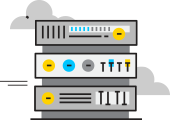Cyber resiliency refers to an entity’s ability to continuously deliver the intended outcome despite adverse cyber events. It is an evolving perspective that is all about making sure an organization can bounce back from an incident involving its digital infrastructure without significant disruption to its operations.
Origin and History of Cyber Resiliency
The concept of cyber resiliency has its roots in the wider area of resilience in systems and network theory, which can be traced back to the early days of computer science in the 1950s and 1960s. As digital systems became more complex and critical to organizations’ operations, the concept of not just surviving but thriving amid disruptions gained traction. The term “cyber resiliency” itself started to gain prominence in the late 1990s and early 2000s, as incidents of cyberattacks started to become more frequent and disruptive.
Exploring Cyber Resiliency
Cyber resiliency is about more than just recovering from attacks. It is a comprehensive approach that includes identifying potential threats, protecting systems, detecting intrusions or anomalies, responding to incidents, and recovering from them. A resilient system not only has strong defenses but can also adapt to changing threat environments, resist attacks, and recover quickly and effectively when attacks do occur.
This proactive and adaptive stance distinguishes cyber resiliency from more traditional, reactive approaches to cybersecurity, such as perimeter-based defenses and malware detection. It also includes elements such as business continuity planning, disaster recovery, incident response, and more.
Cyber Resiliency: How it Works
The key to cyber resiliency is building layers of protection that can isolate and contain threats. This involves a combination of technical, organizational, and human factors.
Technical measures include deploying redundant systems, diversifying system architectures, compartmentalizing information and systems, using secure coding practices, employing strong encryption, and other advanced defenses.
Organizational measures involve establishing strong governance structures, developing and testing incident response plans, promoting a culture of security, and investing in continuous training and awareness programs.
Human factors involve cultivating a mindset of resilience among all staff, ensuring that they are aware of the risks and know how to identify and respond to potential threats.
Key Features of Cyber Resiliency
- Adaptability: The ability to change and evolve in response to a changing threat landscape.
- Strength: The robustness and redundancy built into systems to withstand attacks without significant disruption.
- Response: The capacity to detect and respond to incidents swiftly and effectively.
- Recovery: The ability to restore normal operations quickly after an incident.
Types of Cyber Resiliency
There is no formal classification of cyber resiliency types as it is more of a concept than a specific technology or methodology. However, there are different strategies that organizations can employ to improve their cyber resiliency. These include:
- Redundancy: Having backup systems in place to maintain functionality in the event of a disruption.
- Diversification: Using a variety of different systems and technologies to reduce the risk of a single point of failure.
- Segmentation: Dividing networks into separate segments to limit the potential impact of an attack.
- Incident response planning: Preparing for potential cyber incidents by developing and testing plans.
- User awareness and training: Educating users about cybersecurity risks and how to respond to potential threats.
Using Cyber Resiliency: Challenges and Solutions
Cyber resiliency can pose certain challenges. The complexity of modern digital environments can make implementing resiliency measures a daunting task. Additionally, cyber threats are constantly evolving, requiring organizations to continuously update their defenses.
However, these challenges can be addressed. By adopting a risk-based approach, organizations can prioritize their efforts and resources. Additionally, through continuous monitoring and updating of their cyber environment, they can stay ahead of the threat landscape.
Cyber Resiliency vs. Other Terms
While similar to terms like cybersecurity and information security, cyber resiliency carries a broader connotation. It is about not only preventing and mitigating attacks but also about enabling an organization to continue functioning effectively during and after an attack. The table below shows a comparison:
| Term | Description |
|---|---|
| Cybersecurity | The practice of protecting systems, networks, and data from digital attacks. |
| Information Security | The practice of preventing unauthorized access, use, disclosure, disruption, modification, or destruction of information. |
| Cyber Resiliency | The ability of an organization to prepare for, respond to, and recover from cyber attacks, maintaining the continuity of operations. |
Future Perspectives and Technologies
As cyber threats continue to evolve, so too will the strategies and technologies used to combat them. Some emerging trends in cyber resiliency include the use of artificial intelligence and machine learning to predict and identify cyber threats, the use of blockchain for secure, resilient data storage, and the increased use of cloud-based and decentralized systems to improve redundancy and resiliency.
Proxy Servers and Cyber Resiliency
Proxy servers can play an important role in a comprehensive cyber resiliency strategy. They act as intermediaries between users and the internet, providing an additional layer of security and privacy. They can help to isolate internal networks from external threats and can also be used for load balancing, which can increase redundancy and resilience.




